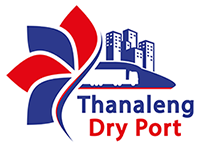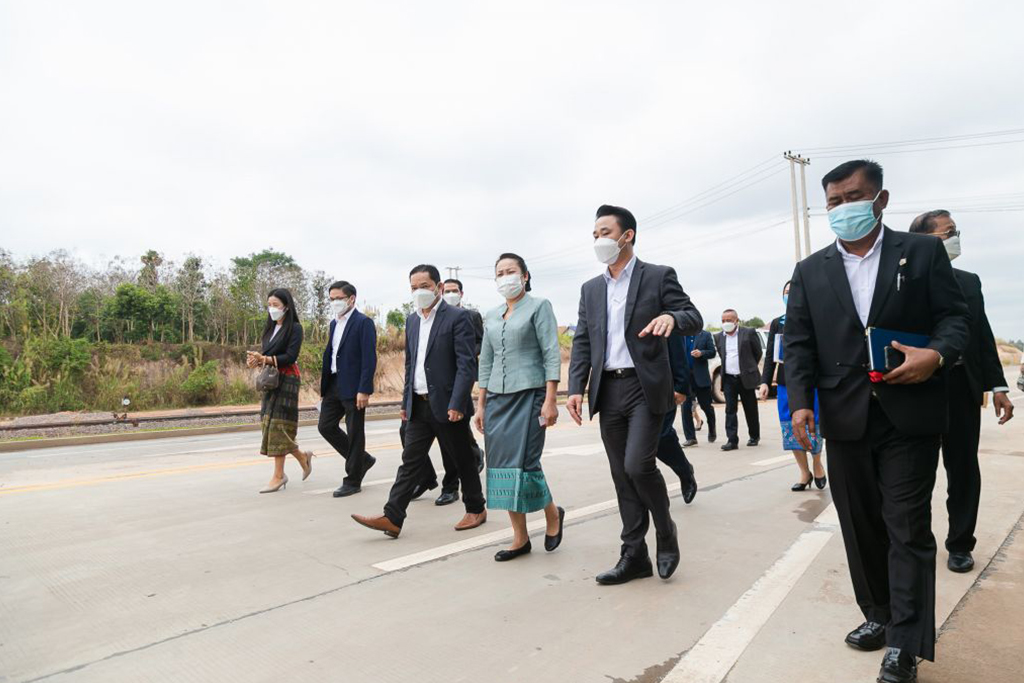
Thanaleng Dry Port, Vientiane Logistics Park smooth transport, offer business opportunities
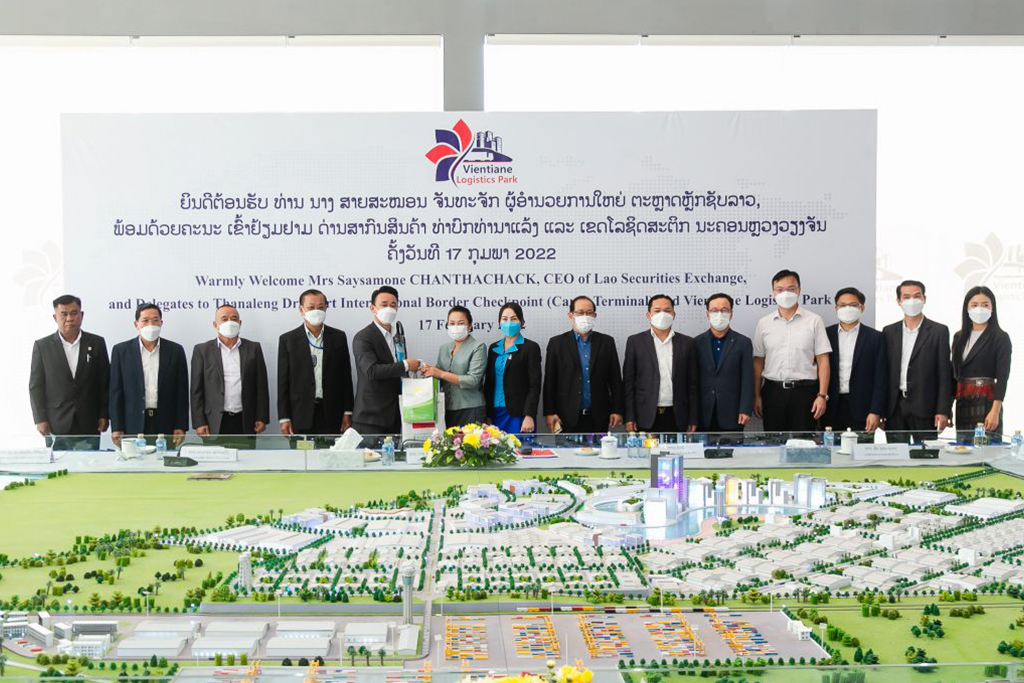
The Thanaleng Dry Port (TDP) and Vientiane Logistics Park (VLP) have increased the speed of freight transport, cut costs and offered investment opportunities, the developer of the project has told securities companies.
Executives of securities companies led by the Director of the Lao Securities Exchange, Ms Saisamone Chanthachak, visited the two facilities on Thursday to learn about their operations.
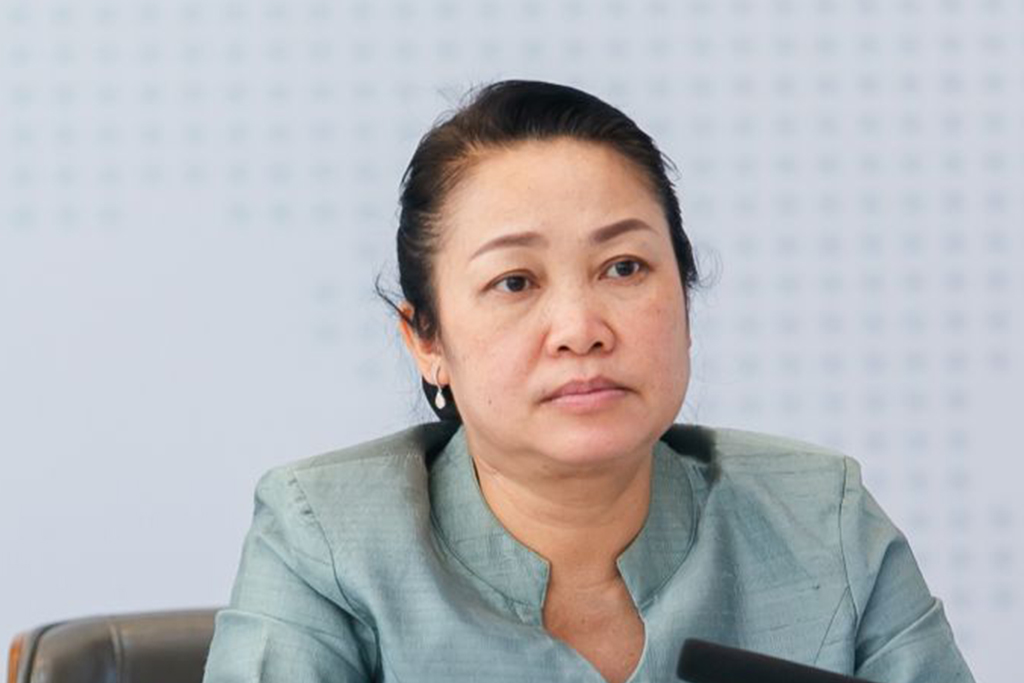
Vice Chairman of Vientiane Logistics Park Co., Ltd. Mr Viengkhone Sitthixay, and TDP Managing Director Sakhone Philangam briefed the guests about the US$727 million project, which officially opened for service in December last year.
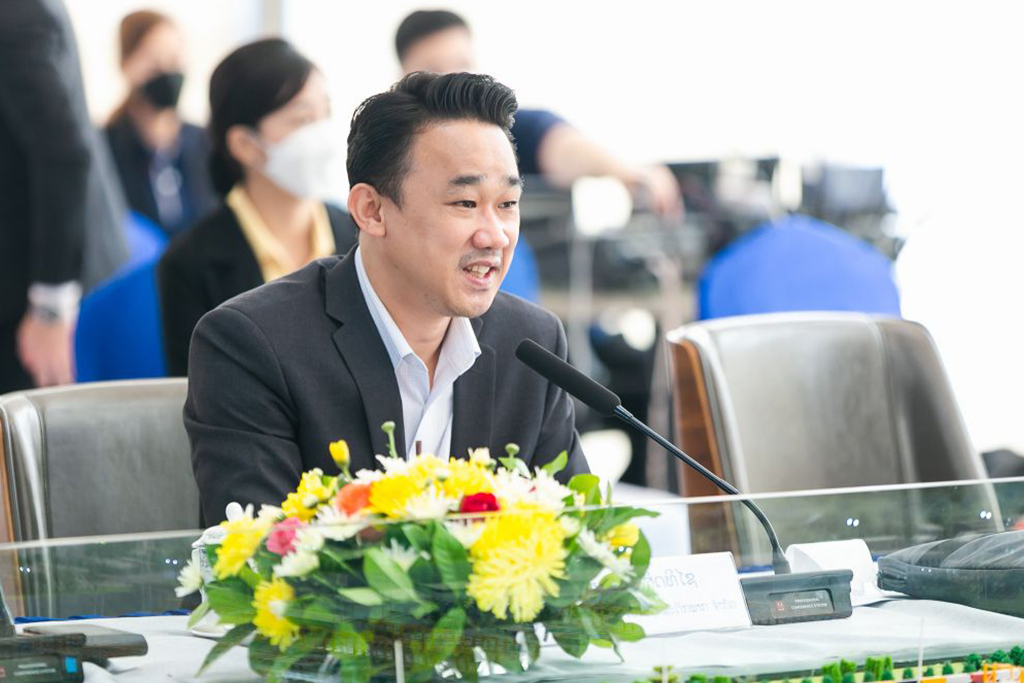
Located next to the Laos-Thailand railway station and the Laos-Thailand Mekong Friendship Bridge 1, the project is expected to reduce cross-border transport costs, especially at the friendship bridge border crossing, by 40 percent from current prices by 2025.
The high cost of transport has been mainly driven by the fact that trucks carrying goods from Thailand to Laos returned home empty after unloading goods, according to Mr Sakhone.
The management of the dry port and logistics park is seeking to address this issue in order to cut costs, he told the guests.
The dry port and logistics park have utilised modern technologies and equipment to quickly facilitate logistics and transport services in an environmentally-friendly manner.
The dry port functions as an international border checkpoint for freight, similar to a seaport transit area, where procedures are streamlined to enable the smooth flow of trucks and freight.
Mr Sakhone said the dry port continues to operate beyond the working hours of the tariff service, which means trucks can continue to unload goods with logistics procedures carried out later on. This means the dry port is able to handle larger numbers of trucks compared to the friendship bridge crossing where transport is halted after the tariff service closes.
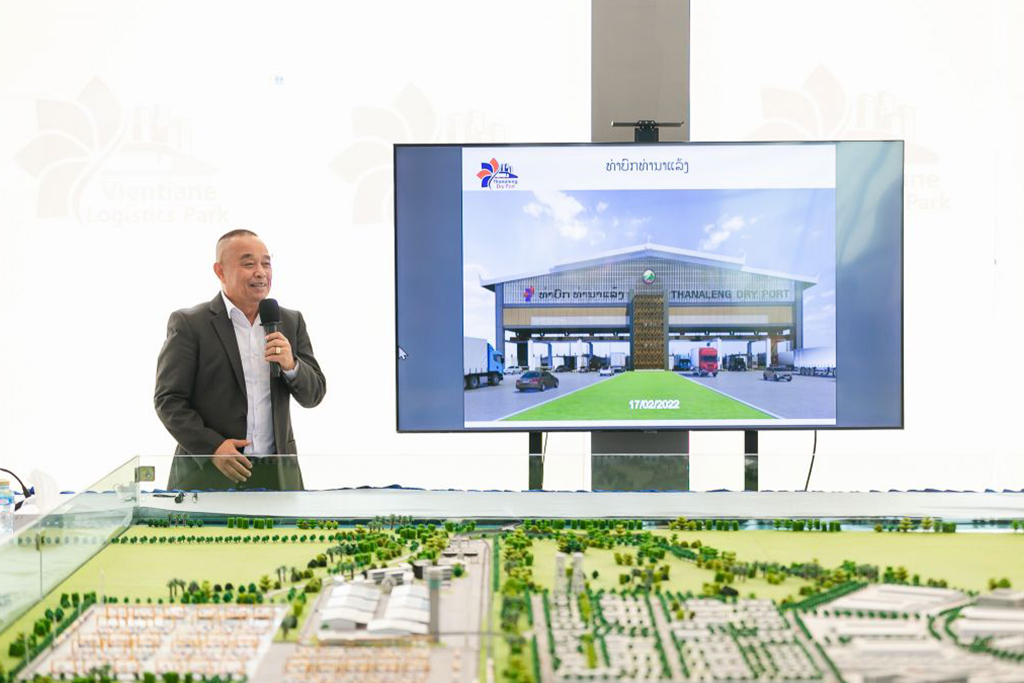
“This helps to reduce the volume of trucks at the friendship bridge,” he said.
About 600 trucks cross the border from Thailand to Laos via the bridge every day, making it difficult to carry out all transport procedures in the bridge area.
Although Laos and Thailand have a rail link, they do not have an agreement that allows rail freight transport between the two countries. They only have a rail transport agreement on the shipment of containers from and to a third country via their territory.
However, to speed up the movement of containers transiting to and from third countries, the Lao government has agreed in principle to extend the operating time for freight transport via the Laos-Thailand railway
The developer of the logistics park has contacted Thai authorities to push for an extension of the operating times of rail transport after learning of the growing need for freight transport, especially of containers that Thailand wants to ship to China via the Laos-China railway.
Vice Chairman of Vientiane Logistics Park Co., Ltd. Mr Viengkhone Sitthixay, told the guests that a metre-gauge track (the size of the Laos-Thailand railway) and a standard 1.435 metre-gauge track (the size of the Laos-China railway) are being built inside the dry port to link the two railways.
Construction of the two tracks is expected to be complete by March this year, which will speed up the transport of containers.
As the two railways have not yet been connected, the Vientiane Logistics Park Co., Ltd. has prepared 40-50 trucks to provide transport between the dry port and the Laos-China railway’s Vientiane station free of charge
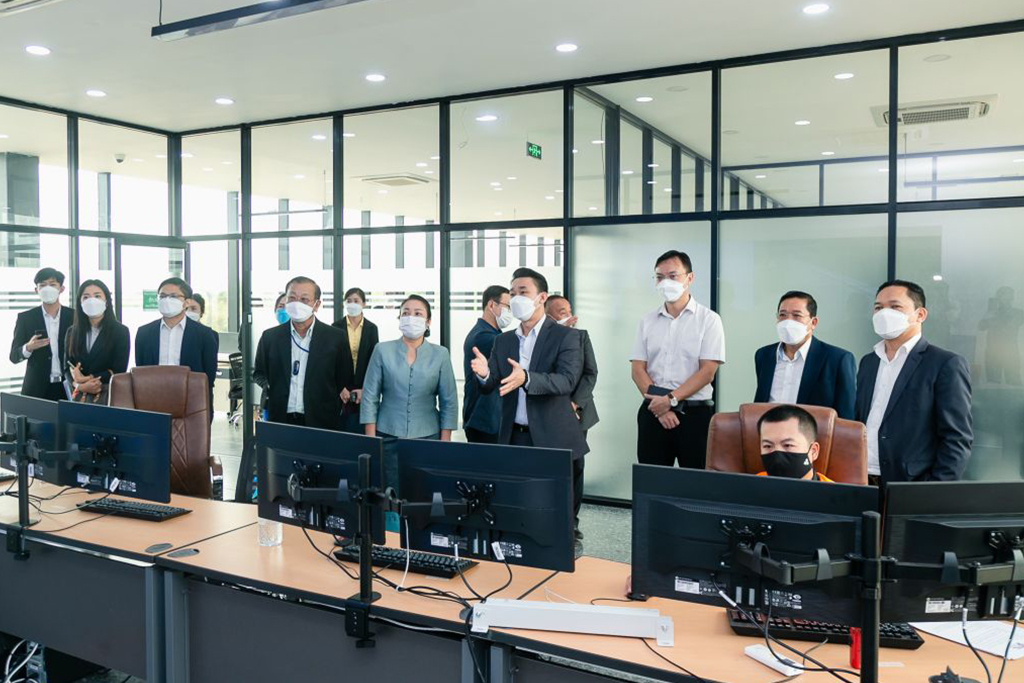
Mr Sakhone told the guests that the logistics park has offered investment incentives and opportunities for businesses through its investment zones.
These zones are the Thanaleng Dry Port – the centre of international import and export trade with all categories of customs operations; the Tank Farm – a fuel distribution centre for Laos; the Logistics Park – a warehousing and distribution centre; Free Trade Zone; and Export Processing Zone.
The project developer said investment incentives include tax breaks in line with Lao laws and regulations.
Construction of the dry port and logistics hub began in December 2020 with the project expected to be fully complete within three years.
Sitthi Logistics Lao Co., Ltd. holds a 70 percent stake in the dry port and logistics park, with the remaining 30 percent stake held by the Lao government.
The 50-year concession project, being developed on 382 hectares of land, can be extended for another 49 years after the end of the first concession agreement.
